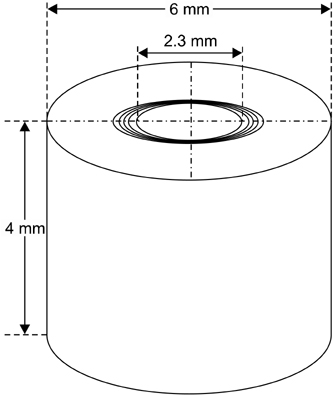Chonnam Med J.
2012 Dec;48(3):155-158. 10.4068/cmj.2012.48.3.155.
Substantivity of Three Concentrations of Tetraclean in Bovine Root Dentin
- Affiliations
-
- 1Department of Endodontics, Hamedan University of Medical Sciences, Hamedan, Iran & Iranian Center for Endodontic Research (ICER), Tehran, Iran. zahed_mohammadi@yahoo.com
- 2Department of Periodontology, Endodontology, Pharmacology and Microbiology, Dental, School, University of Brescia, Italy.
- 3Department of Odontostomatological and Maxillofacial Sciences, Federico II University of Naples, Italy.
- 4General Dental Practitioner, Hamedan, Iran.
- 5General Dental Practitioner, Tehran, Iran.
- KMID: 2048804
- DOI: http://doi.org/10.4068/cmj.2012.48.3.155
Abstract
- In the present study, the residual antibacterial activity, or substantivity, of three concentrations of Tetraclean (Ogna Laboratori Farmaceutici, Muggio, Italy) was assessed in bovine root dentin in vitro. One hundred ten dentin tubes prepared from bovine incisor teeth were infected in vitro for 14 days with Enterococcus faecalis. Thereafter, the specimens were divided into five groups as follows: 100% Tetraclean, 10% Tetraclean, 1% Tetraclean, sterile dentin tubes (negative control), and infected dentin tubes (positive control). Dentin chips were collected with round burs into tryptic soy broth and, after culturing, the number of colony-forming units (CFU) was counted. The number of CFU was minimal in the first cultures in all experimental groups, and the results obtained were significantly different in the different groups at all time periods (p<0.05). At all five experimental periods, the 100% Tetraclean group showed the most effective antibacterial action (p<0.05). In each group, the number of CFU increased significantly with time (p<0.05). There was a direct relationship between the concentration of Tetraclean and its substantivity. In conclusion, under the conditions of the study presented here, the substantivity of 100% Tetraclean was significantly higher than that of lower concentrations.
Keyword
MeSH Terms
Figure
Reference
-
1. Kakehashi S, Stanley HR, Fitzgerald RJ. The effects of surgical exposures of dental pulps in germ-free and conventional laboratory rats. Oral Surg Oral Med Oral Pathol. 1965. 20:340–349.
Article2. Möller AJ, Fabricius L, Dahlén G, Ohman AE, Heyden G. Influence on periapical tissues of indigenous oral bacteria and necrotic pulp tissue in monkeys. Scand J Dent Res. 1981. 89:475–484.
Article3. Sundqvist G. Ecology of the root canal flora. J Endod. 1992. 18:427–430.
Article4. Hess W. Anatomy of root canals in the teeth of the permanent dentition. 1925. New York: William Wood & Co.5. Peters OA, Laib A, Göhring TN, Barbakow F. Changes in root canal geometry after preparation assessed by high-resolution computed tomography. J Endod. 2001. 27:1–6.
Article6. Byström A, Sundqvist G. Bacteriologic evaluation of the efficacy of mechanical root canal instrumentation in endodontic therapy. Scand J Dent Res. 1981. 89:321–328.
Article7. Bergenholtz G, Trope M. Microbiological basis for endodontic treatment: can a maximal outcome be achieved in one visit? Endod Topics. 2002. 1:40–53.
Article8. Haapasalo M, Orstavik D. in vitro infection and disinfection of dentinal tubules. J Dent Res. 1987. 66:1375–1379.9. Khademi AA, Mohammadi Z, Havaee A. Evaluation of the antibacterial substantivity of several intra-canal agents. Aust Endod J. 2006. 32:112–115.
Article10. Mohammadi Z, Abbott PV. Antimicrobial substantivity of root canal irrigants and medicaments: a review. Aust Endod J. 2009. 35:131–139.
Article11. Mohammadi Z, Abbott PV. On the local applications of antibiotics and antibiotic-based agents in endodontics and dental traumatology. Int Endod J. 2009. 42:555–567.
Article12. Torabinejad M, Khademi AA, Babagoli J, Cho Y, Johnson WB, Bozhilov K, et al. A new solution for the removal of the smear layer. J Endod. 2003. 29:170–175.
Article13. Mohammadi Z, Shahriari S. Residual antibacterial activity of chlorhexidine and MTAD in human root dentin in vitro. J Oral Sci. 2008. 50:63–67.
Article14. Mohammadi Z. Evaluation of residual antibacterial activity of three concentrations of new root canal irrigation solution. N Y State Dent J. 2008. 74:31–33.15. Giardino L, Pecora G, Ambu E, Savoldi E. A new irrigant in the treatment of apical periodontitis: from research to clinic. 2005. Dublin: 12th Biennial Congress European Society of Endodontology;15–17.16. Mohammadi Z, Giardino L, Mombeinipour A. Antibacterial substantivity of a new antibiotic-based endodontic irrigation solution. Aust Endod J. 2012. 38:26–30.
Article17. Stuart CH, Schwartz SA, Beeson TJ, Owatz CB. Enterococcus faecalis: its role in root canal treatment failure and current concepts in retreatment. J Endod. 2006. 32:93–98.
Article18. Rosenthal S, Spångberg L, Safavi K. Chlorhexidine substantivity in root canal dentin. Oral Surg Oral Med Oral Pathol Oral Radiol Endod. 2004. 98:488–492.
Article19. White RR, Hays GL, Janer LR. Residual antimicrobial activity after canal irrigation with chlorhexidine. J Endod. 1997. 23:229–231.
Article20. Leonardo MR, Tanomaru Filho M, Silva LA, Nelson Filho P, Bonifácio KC, Ito IY. in vivo antimicrobial activity of 2% chlorhexidine used as a root canal irrigating solution. J Endod. 1999. 25:167–171.
Article21. Komorowski R, Grad H, Wu XY, Friedman S. Antimicrobial substantivity of chlorhexidine-treated bovine root dentin. J Endod. 2000. 26:315–317.
Article22. Lin S, Zuckerman O, Weiss EI, Mazor Y, Fuss Z. Antibacterial efficacy of a new chlorhexidine slow release device to disinfect dentinal tubules. J Endod. 2003. 29:416–418.
Article
- Full Text Links
- Actions
-
Cited
- CITED
-
- Close
- Share
- Similar articles
-
- Effect of post space preparation drills on the incidence of root dentin defects
- The effect of cyanate methacrylate on the shear bond strengths to dentin
- Effect of hema and tegdma on the properties of experimental composite resins
- Dentin moisture conditions strongly influence its interactions with bioactive root canal sealers
- Micro-shear bond strength to dentin under simulated pulpal pressure


